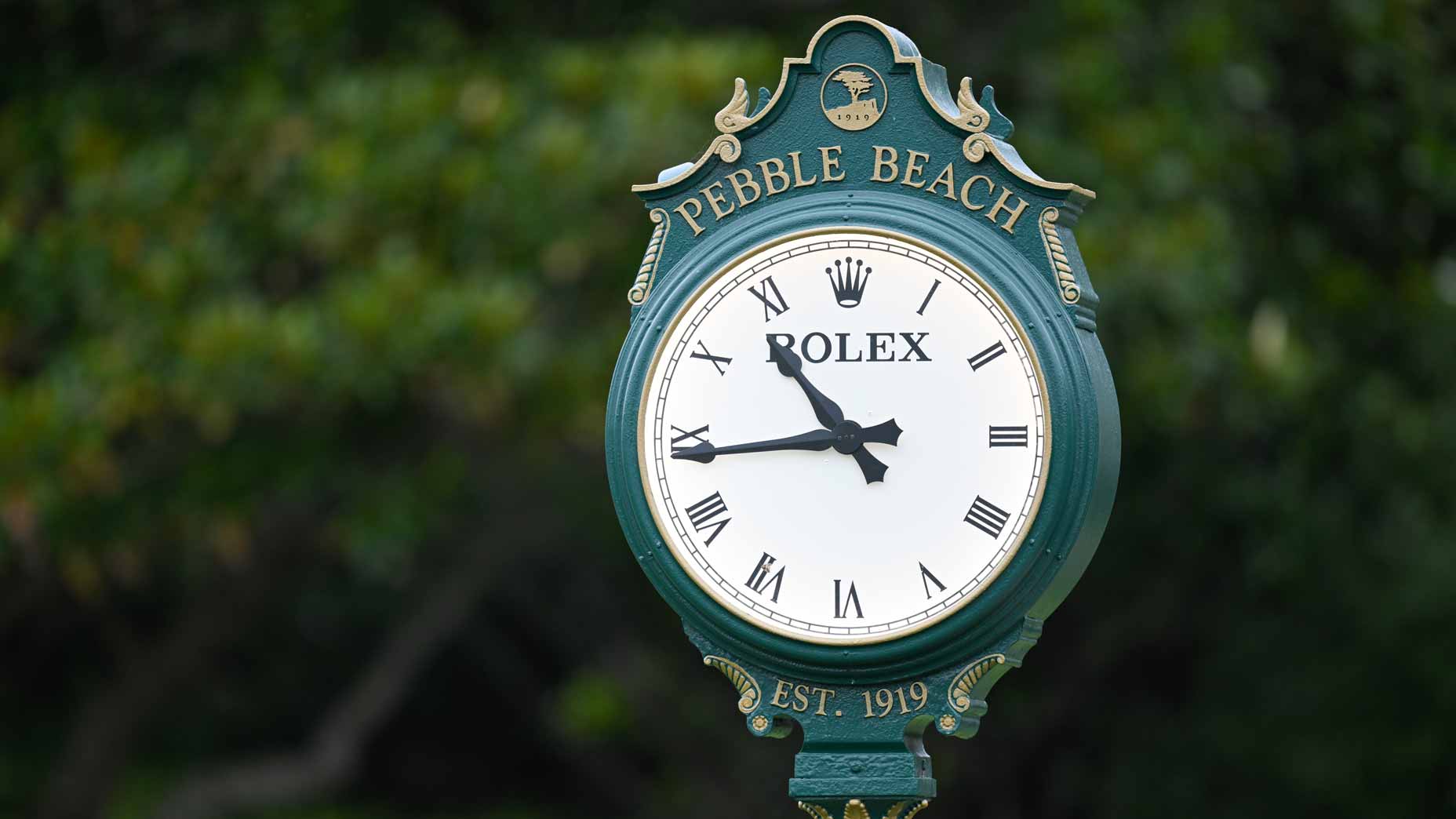One year ago, Adidas finalized its sale of TaylorMade, marking the beginning of independent paths for two of the sport’s most visible brands. I sat down with Adidas Golf president Jeff Lienhart at a recent Adidas photoshoot to discuss the footwear and apparel company’s past, present and future. The interview has been lightly edited for clarity.
GOLF: How has this year been different after Adidas sold TaylorMade?
Jeff Lienhart: It has been a year of constant change, but also a year of establishing a foundation for Adidas Golf that’s right for our business. We have a mantra within our four walls: “Born of sport, rooted in golf.” That pulls upon the heritage of our group — tied to the world’s greatest sports brand — but it also keeps everybody firmly planted in the idea that we have roots in the game of golf. We have to live and breathe golf. And we are absolutely a part of Adidas, but within the ecosystem of Adidas we have been able to establish ourselves as sort of an independent business that can support itself and can be more nimble and faster than the mothership can be.
What is your relationship now with TaylorMade? What does that look like, day-to-day? Is Adidas Golf now functioning as a completely independent entity?
JL: Yeah. Even when we were together we still basically ran separate operations that were entangled, and where there was opportunity for leverage we would take advantage of it — that would go both ways. Now, standing alone, we have the ability to tap into the relationships with TaylorMade we still have, but we’re also able to reach across the aisle and spend some time with other equipment managers where it makes sense. And now, more than ever before, we’re leaning on the bigger brand, Adidas out of Herzo, Germany.

Take me through the process of choosing athletes, because having that connection to the larger sports world sets you guys apart. In getting players, does that come into play in the sales pitch?
JL: We’ve always thought of the professional golfer as an athlete. For the longest time I don’t know that the consumer necessarily saw it that way. But the fitness level, the athleticism that these guys demonstrate on the biggest stages on a weekly basis on the greatest stages around the world, these guys are athletes. I would argue that Dustin Johnson, the No. 1 player of the world and a great ambassador for us, is probably the best athlete on Tour.
We’re very particular about the types of individuals we want to bring into the family, they have to hold up to some standards around their athleticism and the way they carry themselves, what they do outside of the game of golf. Are they playing other sports? Are they active? Those are the things we look at when we partner with somebody. The brand itself has been on a run the last four years. Adidas is back center stage doing as well as any other brand in this space.
In our previous setup, it made sense to start with the equipment and the athlete and then apparel and footwear would more come along for the ride. Now we’re able to talk to a lot more athletes and we’re not beholden to what equipment they’re using. We can choose our guys today, rather than who we would inherit because we were a part of a larger entity with an equipment arm as well.
Tell me about your younger rising stars — guys like Xander Schauffele, Joaquin Niemann, Beau Hossler, Sam Burns.
JL: We have a long list of guys. Sports marketing is always a gamble, especially in golf, because these guys are on their own against the field every week. We think we’re gambling better than others in terms of who we’re bringing on board. You look at Joaquin Niemann, 19 years old — he’s getting a lot of attention for all the right reasons. I just had an opportunity to sit down with him and talk through his scripting, and that kid is engaged, he’s happy to be here, he loves the product he’s seeing and it’s fun working with guys like that.
Do you look for input from the pros along the way? Or do you bring them stuff once it’s ready and say ‘hey, what do you like?’
JL: That’s the purpose behind this week’s entire Adidas event. We’re throwing the product at them and soliciting their feedback. We have the ability to tweak the things we’re doing a little bit. And we absolutely take it into account. We were just talking to DJ about a particular polo that we had him scripted in for next year’s Open and we had a stitch line across the chest. Testing it out in the photoshoot, DJ actually felt the stitch line and it didn’t provide him the stretch that he wanted. That’s the sort of player feedback that allows us to go back to the drawing board and make those subtle tweaks that deliver them the performance they want.
What’s DJ like as a style consultant?
JL: He’s opinionated, and that’s a good thing. I’ve dealt with athletes in the past where you can put product in front of them and they say, “it’s good, it’s good, it’s good.” And I much prefer when guys have feedback. DJ has a fashion sense, and he’s got style, and he wants to look good. From the conversation we had with him moments ago, he says he has certain products where when he puts them on and has to think about them. We want to take that step out.
What’s brand new from Adidas Golf that you can tease?
JL: At a high level, we have three collections of product that meet the needs of all the golfers out there. You have the Adidas Performance range, which sits at the heart of everything we do. That’s what you see the guys wearing on Tour right now. A lot of polyesters, a lot of technical fabrics, all with great benefits for the competing golfer. On the fringes, we’ve created adiPure, which is a little more upscale, a little more premium. That’s a modern classic, if you will. Then you have adicross, which is a little bit more urban-inspired, a little more fresh and on-trend today. We believe our consumer can actually cross over those three collections. Depending on what they’re doing, they could actually wear adiPure, adicross and adidas Performance across the course of a day.

When you look around the Tour now compared to 20 years ago?
JL: Over time it’s interesting just how much it has evolved. 15, 20 years ago the guys were wearing baggy, oversized polos. They liked to pinch up the sleeve when they were standing over the ball. Everything was different. Even pants. Fifteen years ago you had double pleats and, y’know, the cuffs. Fashion has changed.
All that stuff will come back, in time. But our current fashion trend is more Euro, a little tighter fit. It’s tapered and it looks great. At Adidas, we’re looking to either set trend or closely follow trend. And our athletes help us with that. One of the questions we ask when we sit down with them is outside of golf, which brands do you have an affinity for. What’s your inspiration when you’re going out to dinner with your wife or your girlfriend?
Is there anyone particularly edgy that tries to get you to push boundaries?
JL: Edgy for a golfer doesn’t happen too much. Those are few and far between. But there are guys who definitely push us, and where we as a brand can get someone edgy is in the adicross collection. All of the guys like to talk about how cool that collection is and how they use that product; we wouldn’t ask them to wear that in competition but all of them wear it off the golf course.
What separates Adidas Golf from your competition?
JL: Having spent some time in the club space, it’s very difficult for a club company to dominate more than one area. You’re a woods specialist, or a wedge specialist, or the irons guys. In apparel, you’re not so confined.
Our brand transcends generations, it transcends sport categories and our cupboard is full of tech and innovation that we can bring to any of these collections. Most of the technology is directed toward the Performance line, but there’s plenty of tech all over our product. With adiPure, there’s technology all over. But that what we refer to as “hidden tech.” It’s not in your face. For instance, there’s “no-show” tech in adicross that prevents perspiration from showing through the garment. Being Adidas allows us to tap into that.
We’re coming off the equipment free agency grand slam, where none of this year’s major winners have complete equipment deals. Is there a trend of these guys going more à la carte?
JL: Obviously there are fewer companies that are coming in and demanding a head-to-toe approach. Our competitors that have recently exited the equipment space, they’re only demanding one thing, and it’s on body. And of course we are no longer demanding a head-to-toe approach with two brands either. So it’s an interesting time for the players. There are still lucrative equipment deals for guys who command that sort of attention to jump on. But for the others, they’ll be able to put in the bag the 14 clubs that work the best for them, and they’ll work with their apparel companies to figure out the gear that’s going to allow them to walk onto the course with the confidence that they look good and feel good. It all shows up in their game.
What’s the future of Adidas Golf? Where are you guys headed?
JL: We have a little over 450 people around the world who represent Adidas Golf. we’ve got offices set up in the UK, in Tokyo and in Korea and in Toronto, and then there’s our headquarters is in Carlsbad. We took over a building of our own, just put a bunch of money into it to make sure that it’s a place that all the employees take pride in and want to come to and work good hours.
In the four years since I’ve been at Adidas we’ve cleaned up a bunch of bad behaviors and some new business practices that allow us to function better and have allowed us to be better partners to our customers that are out there. In general, we see that golf is a flat business overall. And there’s a lot of competition. Every year it seems like there are three or four new companies and five or six drop out. But we’ve been able to maintain a significant share and grow that share over the last couple years. So we’re looking forward to growing in a flat market.
Finally, what gets you up in the morning — and what keeps you up at night?
JL: What gets me up in the morning and what I enjoy most is walking through the front doors of the building, which is filled with energetic, enthusiastic teammates driving toward a similar goal. That has meant more over the last year than ever. Everybody fully understands our game plan and our strategic plan and they embrace that, from understanding our consumer and our product to long-term business drivers.
What keeps me up at night is that it is a tough business and it’s a competitive business. If you fall behind, it’s going to eat your lunch. We’re trying to stay one step ahead of the competition and one step ahead of trends so that we can be there, we can be prepared and we can take the consumer on a journey they wouldn’t otherwise be expecting.









